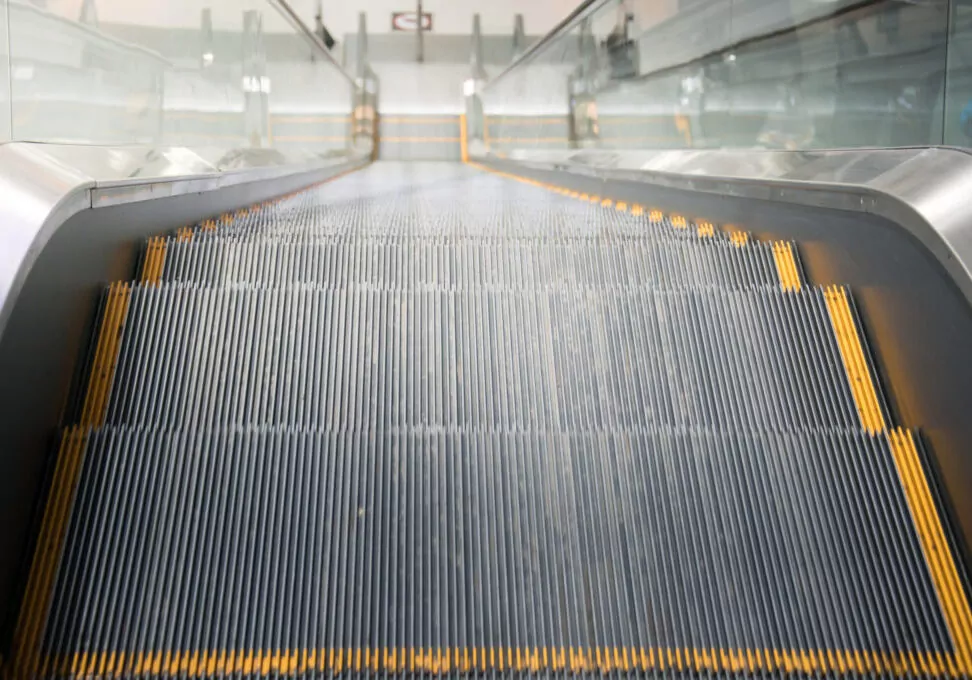The first operational escalator was an amusement ride at Coney Island, the theme park in New York. Patented in 1892, it signaled the beginning of a new era. Now, they are so ubiquitous that we hardly consider how often we rely on them in shopping centers, airports, hospitals, office buildings, and more.
As escalators have become part of our everyday lives, accidents do happen although statistics suggest that escalator-related injuries and fatalities are, thankfully, fairly uncommon.
Here are 10 interesting facts about escalator accidents:
1. 10,000 injuries require emergency care every year
The Consumer Product Safety Commission (CPSC) estimates an average of 6,000 people per year are injured on escalators. However, one of few studies on the topic gives a higher total. Published in the National Institutes of Health’s (NIH) National Library of Medicine, the study notes that 10,000 escalator-related injuries per year require emergency care in the United States.
2. Age and alcohol consumption are risk factors
The same study also found two factors in particular increased the risk of being hurt on an escalator: alcohol intoxication and age. Based on that finding, two risk groups were identified: elderly women and intoxicated men under the age of 60.
3. Inspection reports are public in California
The United States, and California in particular, have higher inspection and maintenance standards than many other countries. In California, escalators installed for commercial use must pass an inspection every two years. The owner/operator of an escalator that fails inspection must shut down the device while repairs are done and a new inspection is conducted. California law requires the report to be public, allowing users to make sure the escalator’s certification is up to date.
4. Issues are fairly rare but can happen without warning
Poorly maintained escalators run a higher risk of malfunctioning. But mechanical and electrical failures can also happen without warning. Consumer Watch lists a few common defects, including: missing teeth on the escalator track, loose or missing screws, excessive space between the steps and the escalator sides, broken or missing steps, and electrical malfunction.
5. Falls account for three out of four accidents
Escalator defects can then lead to accidents, such as finger entrapment, between-step entrapment, comb plate entrapment, and slips and falls. The Consumer Product Safety Commission estimates falls are by far the most common injury, accounting for 75% of escalator injuries, followed by entrapment at twenty percent. Consumer Watch notes that getting caught in the escalator tends to be particularly serious and is more likely to involve young children.
6. Soft tissue injuries most common
Escalator accidents can have serious medical repercussions. Soft tissue damage is the most common injury, the NIH-published study found. Among the incidents that the study reviewed, many victims also suffered severe injuries that involved multiple body parts. In some cases, the injuries required hospitalization and surgery. CPSC data shows each year, approximately two to three people die as a result of escalator accidents.
7. Escalator entrapment leads to civil suit
An example of entrapment occurred in the spring of 2021 when a boy narrowly escaped what the media called a “harrowing escalator incident.” The boy was going down an escalator inside the Staten Island Mall in New York when his foot suddenly became stuck. Bystanders finally managed to pry back the machine’s wall with a metal rod to free the boy. His father filed a civil suit, alleging negligence by the four defendants who each owned, leased, and operated the mall and the escalator. The suit noted that the boy suffered “serious and severe personal injuries.”
8. Electrical malfunction caused mass-injury incident
One of last year’s most highly publicized escalator incidents happened at Boston’s Back Station and tragically resulted in the hospitalization of nine people. A video of the accident shows how the escalator suddenly reverses at a high rate of speed, forcing people to tumble down. Two families injured in the incident sued the state transportation authority and the maintenance company.
9. Premises liability law holds owner responsible for safety
The owner of an escalator is responsible for maintaining the safety of the machine. If an accident occurs due to machine malfunction, and the owner has failed to properly maintain the escalator, the owner may be held liable for any injuries that the accident caused under premises liability law. Not all injuries, however, are due to malfunction. If you sustain an injury on an escalator due to the actions of someone else, that person may be held liable if the actions are deemed negligent.
10. Penney & Associates can determine who’s at fault
Where, why, and how did your injury occur? If you have been injured in an escalator accident, it’s important to uncover the facts to determine who is at fault for your injuries. The attorneys at Penney & Associates have decades of experience helping people like you secure the compensation you are entitled to. Schedule a free consultation to learn more.



